#1590-1594
#1590 - Stenus sp.
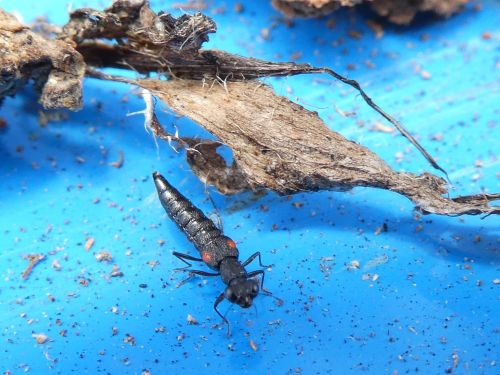
Found by Len van der Waag, down here in the SW, in his wheelbarrow full of firewood.
These distinctive Rove Beetles are found worldwide, and is quite possibly the largest genus of animals in the world, with over 3000 described species. They are predators of smaller invertebrates including springtails, which they catch with an extendable labium tipped with bristles, pads and adhesive glands. They extend this with astonishing speed, fast enough to catch springtails before they can jump away, and draw the prey back to the mandibles.
Many species are semi-aquatic, so I’m not sure what this one was doing in a wheelbarrow, but they have useful adaptations for living around water too. They can swim quite rapidly, for one thing, but if they need to move in a hurry they secrete a hydrophobic chemical from their anal glands, which changes the surface tension around them and shoots them across the water at 70cm a second. A human moving at an equivalent speed would be travelling at 900km/hr.
#1591 - Ropalidia romandi - Yellow-brown Paper Wasp
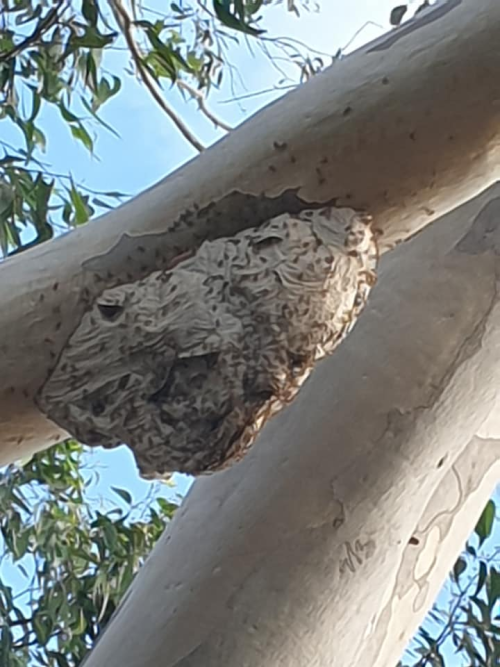
Photo by James Garner, in Brisbane.
This is one of Australia’s Polistine social wasps, but unlike our other ones this one adds an external layer of paper around the horizontal combs. Since it’s a swarm-founding species, the colonies grow rapidly and can end up over a meter long, usually on the underside of large tree branches or the eaves of houses.
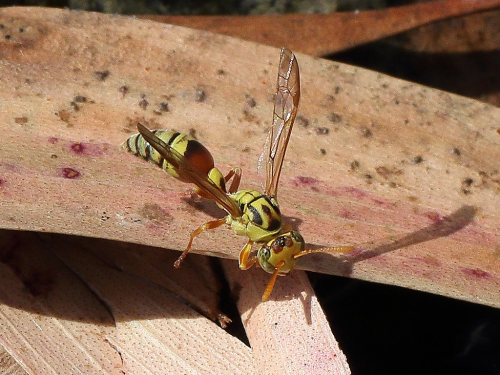
(photo by Summerdrought)
Yellow-brown Paper wasps generally breed in summer, and empty cells are stocked with nectar for winter.
Their sting is very painful, but short-lived, and like most paper wasps will soon learn to recognise any humans they see in the yard, and ignore you. If you change your hair colour, or are a stranger, they may give you a warning sting to keep away.
#1592 - Tirumala limniace - Blue Tiger
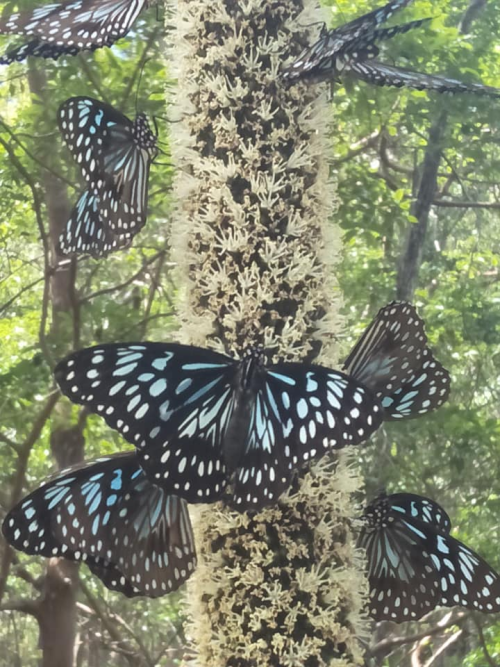
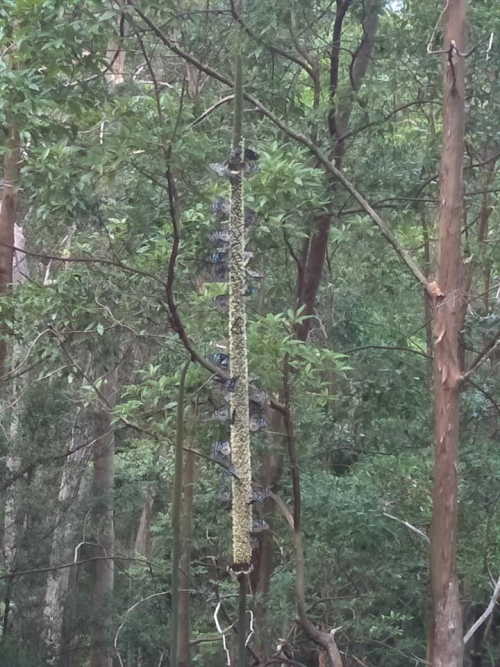
Photo by Rowan Smith at Mt Coot-tha, Brisbane.
Blue Tigers going berserk on a Xanthorrhea flower spike.
Blue Tigers are Danaine Nymphalids found from Pakistan (and rarely further west) to various Pacific islands, and all states of the Australian mainland.

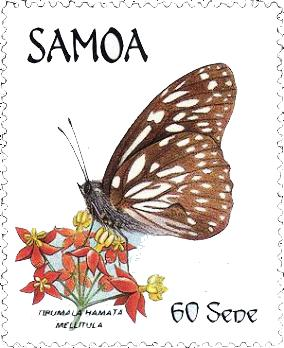
In Southern India they’re migratory, like their relative the Monarch, but the swarms are mostly male. In Australia, they sometimes migrate from the northern end of Queensland, down to Brisbane. Also like the Monarchs, the caterpillars eat various milkweeds.
#1593 - Neola semiaurata - Golden Notodontid
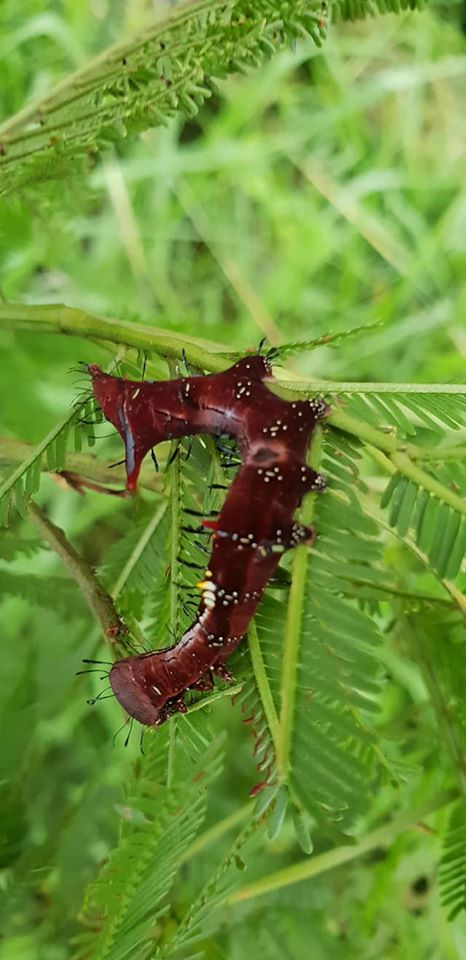
Found by Mark Fuller in Mulgoa, NSW.
Despite the name, the adult moth is quite dull compared to the caterpillar. The diagonal creases near the tail conceal two pair of blue eyespots, revealed when the larva rears up, often everting a red branching organ near the head at the same time. Swallowtail butterflies have something similar that emits a foul smell, but I don’t know if anybody has ever examined this caterpillar for the same.
Found in most Eastern states, on a variety of plants.
#1594 - Anthela astata
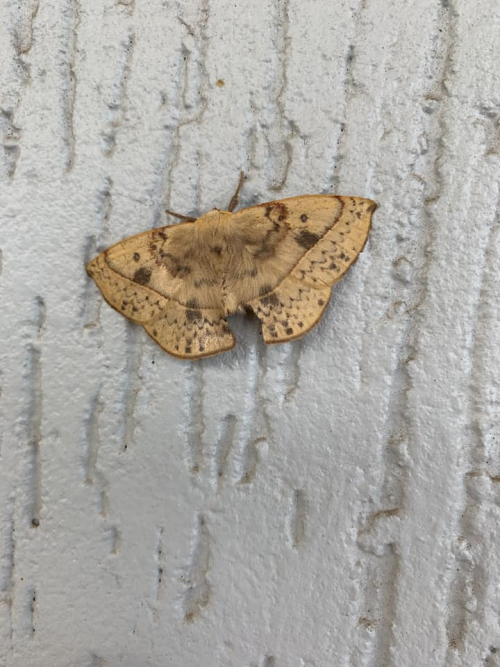
Photo by Lisa Millar, in Wamuran near Moreton Bay. An Anthelid moth native to Queensland, where the caterpillars eat gum leaves, and pupate in leaf litter.
The adult males are usually pale brown with a dark line across each wing, but with a variable number of darker spots, and a wingspan of about 7 cms. The female moths have pale brown wings with a prominent dark straight submarginal line and a fainter zigzag line curving across the middle of each wing. They’re also significantly larger than the males with a wingspan of about 9 cms.